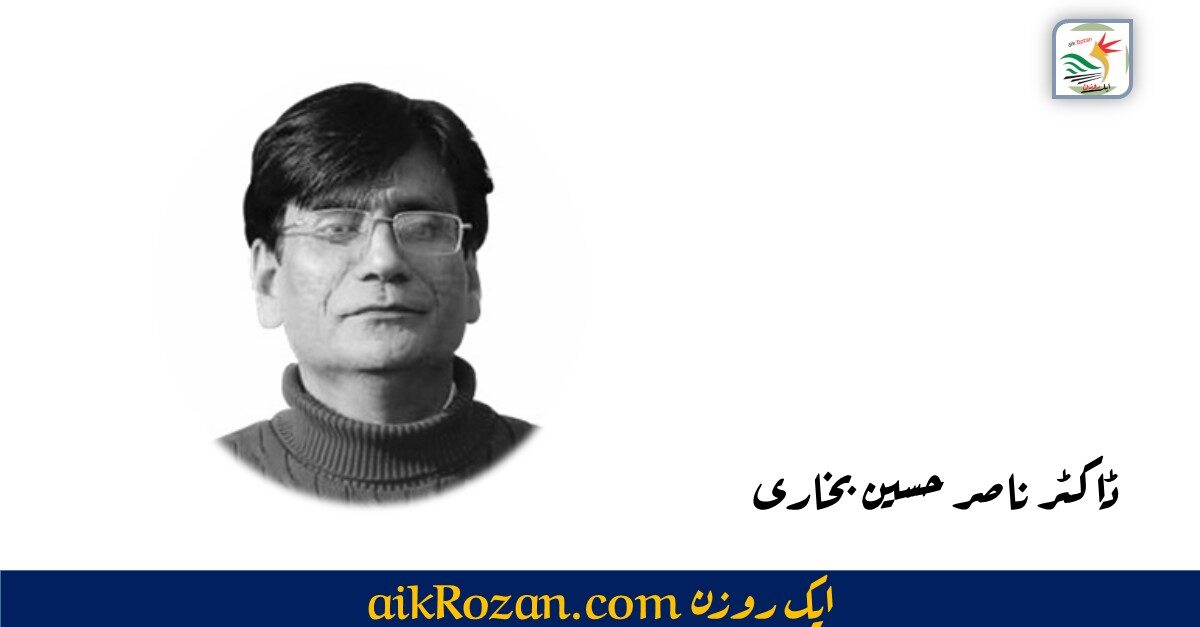
May Day the day of humanity
by, Dr. Nasir Hussain Bukhari
First day of May is celebrated every year in commemoration of the sacrifices of the labour. Articles are written, rallies held and speeches are delivered that we forget on 2nd day of May. However, we need to analyse the situation every year to assess whether any change has occurred or status-quo is maintained.
The record of miseries of labour in Pakistan needs a critical analysis to explore the reality. The critical analysis always helps to reveal the facts and truth. After the USA, the most important sacrifices of the labour for their rights, history recorded in Multan during the Zia regime in Colony textile Mills. This incident gave new impetus to the labour movement in Pakistan but still the situation demands constant struggle to bring change in Pakistan. If we have a look upon the conditions of our labours working in different fields, the situation is far from good rather than being ideal.
Pakistan is one of the producers of coal in the world since the British period. There are three major coal fields in Pakistan, Salt Range Coal field, Punjab, Quetta Coal field, Balochistan and Sindh Coal fields Jimpir and Thar.
The coal miners use traditional methods of mining.
The miners are not provided standard safety equipment used by miners in the World. In mines the miners use old and shabby safety equipment to go into the tunnel for excavation of coal. The humans and donkeys are used for transporting coal ores from mine to storage fields. Having imagined the situation, we can also feel the agony of the miner, lack of oxygen, inhaling poisonous fumes and above all the breathing of an animal increases life risk for him.
This is the main reason that coal miners are suffering from lung and skin diseases. The low wages makes their lives further miserable. They young children also work and the “chota and bara mazdoor” have different wages paid RS. 200-300 daily.
Concerning the facility of living for these coal miners, they are living in accommodations which are totally non – liveable but they live there. The accommodations for coal miners are deprived of basic hygienic conditions necessary for a healthy life.
Although the government has passed a policy for the mining industry, but it is being implemented as other policies partially and reluctantly by owners.
The owners of the mines are bound to provide complete safety equipment kits, health services and better living conditions not only to them but also for their families. What is happening to them on the spot, it can be observed only by visiting the site.
The situation for labour is the same everywhere in Pakistan either Punjab, Sindh or Balochistan. It is rightly said that there are only two classes, haves and havenots.
Pakistan is very unfortunate because the middle class is in its infancy and there are only two classes “the rich” and “the poor”.
The number of poor is increasing due to inhuman and the worst kind of capitalism is functioning in Pakistan.
The conditions of peasants is not different than of the coal miners. Owing to my rural background, I have keen observation of peasants’ working conditions. The absent landlordism is the main plight of the agriculture sector. Ayub Khan and Z.A. Bhutto made efforts to introduce land reforms to break the concentration of landlordism in Pakistan, but the landlords and bureaucracy made the reforms into a failure. The conditions of poor villagers could not change, they have accepted it as a fait accompli.
Another change that I have noticed in the field of agriculture is very interesting. The change is related to the spread of the sugar industry. The sugar industry offers loans to landlords for chemical fertilizers to ploughing of fields. The loans are deducted after the harvest of crops. Now due to this peasants who owe small pieces of land have become slaves of tyrant sugar industry owners. The small farmers who work with all his family members have become poor to the poorer. The wealth of the sugar industry is piling. As a result of the absence of cultivation of cotton crop, the poverty ratio is increasing among farmers as well as women affecting the national economy.
Women, who pluck cotton fibre and sell it, get higher wage, they support the family for purchasing clothes, shoes and pay school fees of their kids. The sugar industry has replaced cotton in many areas of Punjab and Sindh that is a catalyst for increasing poverty among masses and piling wealth among less than 2% owners.
Such miserable conditions are becoming major reasons for internal migration from rural to urban areas, which is another allied problem of growth of ill-planned slums in the mega cities. The people who live in these slums are deprived of all kinds of civic facilities. They make efforts to find jobs but already under stressed economy has failed to accommodate these migrants. The resulting begging is emerging as a profession in the cities.
If we look at the peasants who are adamant for not leaving their ancestral places facing more problems. The threat of landlords to quit his lands is a big issue for those poor.
The conditions of labourers’ work in brick kilns are forced to sell their organs to pay the loans borrowed from owners and others to survive. The air pollution due to use of low quality coal is risk to their lives.
The lives of workers of iron foundaries are put into risk due to use of coal without taking safety measures.
Among the labour, the worst condition is of women worker who are not only paid low wages but also face the issue harassment at working places.
Though, it seems very pathetic and dark situation but it is the reality.
Undoubtedly, all the governments have passed policies on paper but have not taken concrete measures for the improvement of the class which is actual source to change of the fate of nations.
It is also a fact that General Ayub Khan and Z.A.Bhutto implemented policies for peasant labour and poor but the policies were abandoned after fall of their governments. Bhutto and M.K. Junejo allotted 5 marlas and 3 marlas houses respectively to the poor. Both improved wages of the labour made laws but the percentage of people living below the poverty line in Pakistan has increased as well as the human development index HDI of Pakistan stands at 134 position among the 159 countries. Therefore, there is a lot of room for making constant efforts to improve the lives of the majority of the population in Pakistan.
Pakistan needs to increase literacy and skill oriented education for improving HDI and economic situation of Pakistan in the 21st century.
To bring a sustainable change, the role of academia is of utmost importance to create awareness among students as students are our future managers.
Dr. Nasir Hussain Bukhari is an educationist, analyst and the President PPF National Think Tank Pakistan.


